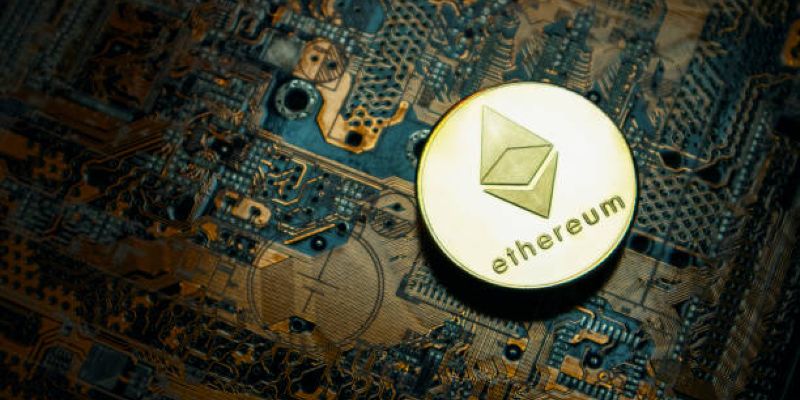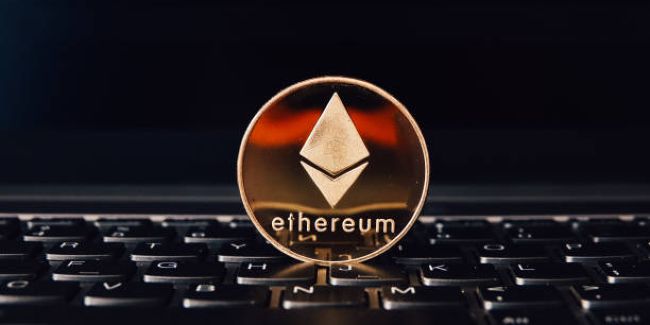What Is Layer 2 Scaling?
Layer 2 scaling is the addition of another layer to Ethereum’s blockchain, which works to process transactions ‘off-chain’. The Layer 2 scaling processes reduce Ethereum blockchain congestion. The new layer performs transactions on Ethereum, reducing the congestion Ethereum handles. The Layer 2 scaling is aimed to maintain decentralization while improving Ethereum’s speed and lowering the costs.
Explore top altcoins under $1 and learn how to report crypto taxes. Stay updated with new EU crypto rules and check the Solana price prediction. See the Bitcoin price analysis for the latest trend.
Why Ethereum Needs Layer 2 Help
Ethereum directly handles about 15 transactions every second. During peak times, the users suffer with delays and the gas fees increases significantly. Ethereum is creamed with all the DeFi, gaming, and NFTs that fight for transactions to go on. Layer 2 scaling optimizes Ethereum’s performance. In the end, it processes Ethereum’s off-chain protocol performance without affecting its protocol.
How Layer 2 Works With Ethereum
Layer 2 scaling perform calculations that Ethereum does alongside its blockchain. Its only runs the main layer and works on the upper rails collecting transactions. After gathering and validating the off chain transactions, Ethereum is then forwarded a complied record with a single massive Ethereum transaction record.
Types of Layer 2 Scaling Solutions
- Rollups work with Ethereum by summarizing the transactions off chain and posting compiled records to Ethereum directly.
- State channels allows isolated off-chain transactions that transmits with users only.
- Plasma links them to Ethereum and attempts to create smaller blockchains.
All of them pursue features to aid Ethereum and Layer 2 scaling. While some focus on the speed, the others attempt to reduce the gas fees.
Explained Rollups
Rollups consolidate multiple transactions into a single submission to Ethereum which reduces congestion and fees. Rollups also take advantage of Ethereum’s security protocols. They are optimal for DeFi and NFT transactions.
Optimistic Rollups
Optimistic Rollups consider transactions as valid until proven otherwise. Any user can challenge a transaction and if fraud is detected, it is reversed. This approach offers a blend of speed and security. Optimism and Arbitrum are the primary proponents of this strategy.
ZK-Rollups
ZK-Rollups deploy zero-knowledge proofs to verify transactions. They confirm batches and therefore do not require challenges. This approach is utilized by zkSync and StarkNet and is, therefore, more secure and efficient.
The Importance of Layer 2 Technology
The Ethereum blockchain, like many others, operates on a first-come, first-served basis. This creates competition for transaction into blocks and can slow the network. Layer 2 blockchain technologies augment Ethereum by alleviating congestion on-chain. This, consequently, enhances the speed and cost-effectiveness of dApps.

Gas fees on Ethereum can soar to hundreds of dollars which is prohibitive for interacting with dApps. Layer 2 resolves this issue by expanding the DeFi and NFT user base. Moreover, it enables companies to create apps without incurring exorbitant and prohibitive expenses.
Advantages of Using Layer 2 for Ethereum Users
Lower Costs
The price of Ethereum gas fees fluctuates with the number of active users. A basic swap could incur costs of over USD 50. With Layer 2 solutions, the cost is reduced to a few cents. Users are encouraged to perform a greater number of transactions.
Increased Efficiency
Transactions on Layer 2 are confirmed in seconds. Users no longer wait for Ethereum blocks. This translates to smoother trading and gaming, and reduced stress during peak periods.
Increased Performance
Layer 2 allows better performance of DeFi and gaming dApps, which include Aave and Uniswap. These applications are more productive on Layer 2. Users experience more efficient trade execution and reduced costs.
Layer 2 Relating to DeFi and NFTs
The two largest sectors for Ethereum are DeFi and NFTs, which also consume the most gas. Gas fees for minting NFTs and trading tokens are high. Layer 2 solutions offer low gas fees and quick transactions which encourage efficient creation and trading.
Multiple NFT marketplaces are supported by Arbitrum and Optimism, and zkSync is becoming more popular. Users can now mint and transfer NFTs. Lower gas fees provide access to greater number of creators.
Prominent DeFi projects such as Curve and Synthetix are already making use of Layer 2. These projects reduce the gas fees and increase the trading volumes. This supports the entire ecosystem towards sustainable growth.
Layer 2 vs Ethereum Mainnet
| Feature | Ethereum Mainnet | Layer 2 Solutions |
|---|---|---|
| Speed | Slow (15 TPS) | Fast (1000+ TPS) |
| Fees | High gas costs | Low transaction fees |
| Scalability | Limited capacity | High throughput |
| Security | Strong foundation | Inherits Ethereum’s base |
The primary advantage of Ethereum is its security features and Layer 2 builds upon that strength. This new feature is able to scale the network while maintaining security. Users are able to receive both speed and trust.
Practical Applications of Layer 2 Technology
Currently, numerous dApps are powered by Layer 2 technology. For instance, Aave works on Optimism, Uniswap on Arbitrum, and dYdX on StarkWare for advanced trading. These platforms are serving thousands of daily users.
Layer 2 is also adopted by NFT marketplaces. The work of minting is less expensive. Creators as well as collectors win. Gaming platforms also using Layer 2 include Immutable X. This enables high speed and high volume transactions with no slowdowns.
Ethereum is more efficient in supporting additional users with the new Layer 2 feature. These also enhance the adoption of Ethereum on a worldwide scale. Users in economically weaker regions are now able to afford Ethereum applications.
Wondering if Ethereum mining is still profitable? Start mining with these top rigs for beginners. Also discover Layer 2 crypto projects worth watching in 2025.

Pros and Cons of Layer 2 Scaling
| 🔍 Feature | ✅ Pros | ❌ Cons |
| Transaction Fees | 🔻 Drastically reduced costs | 🛠️ May require bridging complexities |
| Speed | ⚡ Instant transaction confirmations | 🧪 Some platforms still in testing |
| Adoption | 🌍 Growing ecosystem support | ⛓️ User must switch between networks |
| Network Congestion | 🛑 Eases Ethereum congestion | 🔄 Fragmentation across Layer 2s |
| Security | 🔐 Inherits Ethereum security | 🔎 Some rollups are not fully mature |
Challenges Layer 2 Still Faces
UX Complexity
There is often a need to bridge assets, and that increases friction. Bridges also have their own risks. A poor UX drives some users away and wallets and tools are actively being worked on to improve that.
Limited Interoperability
Layer 2s are often isolated to individual ecosystems. Transferring assets between rollups is no walk in the park. This causes fragmentation. Solutions for cross rollup are in the works, but progress is stagnated.
Adoption Curve
Layer 2s are not universally supported by all dApps. Some dApps are taking their time to onboard. There is also a lack of proper information for users. Aids are being created to bridge that gap for users as well, helping developers and platforms.
Looking Ahead to Layer 2
There are still improvements to be made, and developers are eager to tackle them. Gas fees are a problem that cannot be solved by Ethereum 2.0 alone. We all know Layer 2 takes care of the execution, which is the choke point for traffic.
EIP-4844 proto-danksharding will improve the performance of rollups, which in turn will lower the costs associated with Layer 2 even more, allowing for more traffic, leading to mass adoption.
As Ethereum evolves, the focus will shift to developing efficient tools, wallets and bridges. Layer 2 will be integrated into Ethereum as seamlessly as Ethereum is available now, with lower expenses and higher speeds.
How to Start Using Layer 2
Step 1: Choose a Layer 2 Network
Select a network from the following list and have access to major dApps: Arbitrum, Optimism and zkSync.
Step 2: Bridge Your ETH
Make sure to utilize an official bridge. Move ETH from Ethereum to Layer 2. Again, check the bridge URL.
Step 3: Use Layer 2 dApps
Explore trading, DeFi, and NFT apps. Enjoy the low fees and high speeds. Withdraw anytime.
Wallets That Support Layer 2
MetaMask supports Layer 2 networks and allows switching with one click. Other wallets like Argent, Rabby, and Trust Wallet also support Layer 2.
These wallets automatically detect the network and prompt the user to switch. As a result, the use of Layer 2 becomes effortless. Day by day, more wallets that support Layer 2 are emerging.
The wallets also come with other features like the security of hardware wallets which give full control to users.
The security of Layer 2 solutions
The majority of Layer 2 solutions use Ethereum for security. Roll-ups bolster security by posting data on-chain. This guarantees transparency and trust.
Fraud proofs and zero-knowledge proofs bolster security on the home level. Code audits and user investigations for new protocols, however are always necessary due to bugs and delays.
While the security of a project does improve with time, the most trusted projects are always the market leaders.
Developer Adoption of Layer 2
Sustained developer interest in Layer 2 is a driving factor. Users are often restricted by gas costs. Developing on rollups allows for better user experience and a more global user base.
Truffle and Hardhat have incorporated Layer 2 testing. SDKs for rollups and other libraries are used more frequently. This reduces integration challenges.
Grants and hackathons help promote Layer 2 dApps. Development is progressing rapidly.
How businesses benefit from Layer 2
Businesses are able to cut costs with Layer 2 solutions. NFT platforms can cheaply mint NFT assets. De-fi applications are able to reduce transaction costs. GameFi projects scale without experiencing slowdowns.
This also caters to businesses in Web 3.0, as Layer 2 solutions can support millions of users and makes micropayments possible. Sustained growth then becomes achievable.
Layer 2 and mass adoption
Layer 2 solutions are able to reach millions of users. Ethereum users burdened with high gas fees can now make use of DeFi and NFTs.
Increased fee affordability will always attract developers and users. This, too, creates a positive feedback loop. The ethereum ecosystem has the capacity to grow at an unprecedented rate. Layer 2 can enable a billion users at once.
The role of layer 2 in Ethereum’s vision
The vision is for Ethereum to become the world’s settlement layer. Other chains and applications would then use Ethereum to settle data. Layer 2 achieves this.
The world as it currently stands, if Ethereum lacks Layer 2 solutions, it still would incur high costs and slow processing speeds. The other way around, with layer 2, it would mean that the network could scale to the use of banking, gaming, identifications, etc. All of that on one safe infrastructure.
Bullet Summary:
- Layer 2 Enhancements Decrease Ethereum Costs and Streamline Congestion
- They Further Enhance Throughput and Support Decentralized Applications
- They are Crucial for the Worldwide Adoption of Web3
Layer 2 Myths Overturned
Myth 1: Safety Concerns Surround Layer 2
Layer 2 risks are mitigated with Ethereum’s security. The network’s defenses are maintained with fraud proofs and zk-proof mechanisms. Top-tier markets undergo audits.
Myth 2: Layer 2 No Longer Required with Ethereum 2.0
2.0 aids in staking and security. However, it does not enhance throughput, so scaling demand persists.
Myth 3: Difficulty of Use
The process to access Layer 2 services is straightforward via wallet-guided network switches, and after ETH bridging.

Layer 2 Solution’s Impacts On Ethereum’s Future Shaping
Ethereum’s scaling demands must be accompanied by security. The Layer 2 solutions provide both the scaling and security needed.
The future is marked by the rollups and other layer 2 tools, as they facilitate unrestricted growth and Ethereum’s practical applicability.
For further insights and crypto guides, explore everything Web3 has to offer at Crypto Program.
Layer 2 scaling in Ethereum outside the network reduces congestion, improving Ethereum’s transaction throughput.
FAQs
✅ Why are Layer 2 solutions important for Ethereum users?
Layer 2 solutions are crucial because they increase transaction speed and reduce costs. This convenience is beneficial for users participating in dApps and DeFi.
✅ Are Layer 2 Platforms Secure?
Layer 2 platforms are secure. The majority of them derive security from Ethereum’s main chain, as they post data back to Ethereum.
✅ Which Layer 2 Networks Are Most Popular?
The leaders in this sector are Arbitrum, Optimism, and zkSync. A significant number of dApps operate on these platforms.
✅ Will Ethereum 2.0 Remove The Need For Layer 2?
No. Ethereum 2.0 improves consensus mechanisms. However, Layer 2 solutions are still necessary for execution and scaling.





